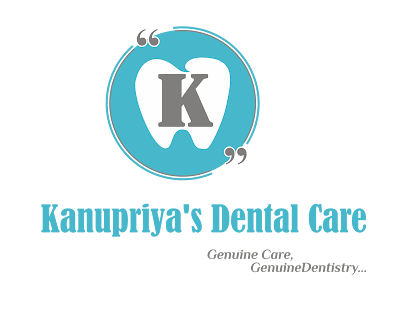Imagine this: You’re sipping your morning coffee when you feel a sharp twinge in one of your teeth. Is it just sensitivity, or could it be something more serious? For many people, terms like “cavities” and “tooth decay” are used interchangeably, but they’re not the same thing. Understanding the difference between cavities and tooth decay is crucial for maintaining your oral health—and avoiding costly dental procedures down the road.
In this comprehensive guide, we’ll break down what cavities and tooth decay really mean, how they differ, and most importantly, how you can prevent both. By the end of this article, you’ll have actionable tips to protect your teeth, backed by expert insights and scientific research. Let’s dive in!
What Is Tooth Decay? (Understanding the Root Cause)
The Science Behind Tooth Decay
Tooth decay, also known as dental caries , is a gradual process that occurs when bacteria in your mouth produce acids that erode the enamel—the hard, protective outer layer of your teeth. This erosion weakens the structure of the tooth, making it vulnerable to further damage.
Here’s how it happens:
- Plaque Formation: Bacteria feed on sugars and starches from food, forming a sticky film called plaque.
- Acid Attack: The bacteria in plaque produce acids that eat away at the enamel.
- Enamel Erosion: Over time, repeated acid exposure leads to tiny holes or pits in the enamel.
According to the World Health Organization (WHO) , untreated tooth decay affects nearly 2.3 billion people globally, making it one of the most common chronic diseases.
Risk Factors for Tooth Decay
Several factors increase your risk of developing tooth decay:
- Poor oral hygiene habits
- Consuming sugary or acidic foods and drinks
- Dry mouth (reduced saliva production)
- Smoking or tobacco use
- Lack of fluoride exposure
Pro Tip: Saliva plays a critical role in neutralizing acids and remineralizing enamel. If you suffer from dry mouth, consider using sugar-free gum or saliva substitutes to boost moisture levels.
What Are Cavities? (The Progression of Tooth Decay)
How Cavities Form
A cavity is essentially the advanced stage of tooth decay. When the enamel has been significantly weakened, bacteria penetrate deeper into the tooth, reaching the softer layer beneath called dentin . Once dentin is affected, a cavity forms—a permanent hole in the tooth that requires professional treatment.
Untreated cavities can lead to severe complications, including:
- Toothaches
- Infections
- Abscesses (pus-filled pockets at the root of the tooth)
- Tooth loss
Types of Cavities
Cavities aren’t all the same—they vary based on location and severity:
- Coronal Cavities: Found on chewing surfaces or between teeth.
- Root Cavities: Occur on exposed tooth roots, often due to gum recession.
- Recurrent Cavities: Develop around existing fillings or crowns.
Key Differences Between Cavities and Tooth Decay:
|
Feature |
Tooth Decay |
Cavities |
| Definition | Progressive damage to enamel | A visible hole or damage in the tooth |
| Stages | Can be reversed in early stages | Requires dental treatment |
| Symptoms | White spots, sensitivity | Pain, dark spots, visible holes |
| Treatment | Fluoride treatments, better oral hygiene | Fillings, crowns, root canal, or extraction |
How to Prevent Tooth Decay and Cavities
Daily Oral Hygiene Practices
Prevention starts at home. Here’s what you should do daily:
- Brush Twice a Day: Use fluoride toothpaste and a soft-bristled brush.
- Floss Daily: Remove plaque and food particles from between teeth.
- Rinse with Mouthwash: Choose an antibacterial rinse to reduce bacteria.
Diet and Lifestyle Adjustments
Your diet plays a huge role in preventing tooth decay:
- Limit sugary snacks and beverages.
- Drink plenty of water to wash away food particles.
- Include calcium-rich foods like dairy, almonds, and leafy greens to strengthen enamel.
Professional Dental Care
Regular visits to the dentist are non-negotiable:
- Dental Cleanings: Remove tartar buildup that brushing alone can’t handle.
- Fluoride Treatments: Strengthen enamel and reverse early signs of decay.
- Sealants: Protect molars from cavities, especially in children.
Case Study: A study published in the Journal of Dental Research found that patients who received fluoride varnish treatments every six months reduced their risk of cavities by 40% compared to those who didn’t.
FAQs About Cavities and Tooth Decay
Can cavities go away on their own?
No, cavities require professional treatment. However, early-stage decay (demineralization) can be reversed with fluoride and proper care.
How can I tell if I have a cavity or just tooth sensitivity?
Tooth sensitivity usually affects multiple teeth and is triggered by temperature changes. Cavities cause persistent pain and visible damage to a specific tooth.
What is the best way to prevent cavities?
Brushing with fluoride toothpaste, flossing daily, reducing sugar intake, and visiting your dentist regularly are the most effective prevention methods.
Are cavities contagious?
While cavities themselves are not contagious, the bacteria that cause decay can spread through saliva-sharing activities like kissing or sharing utensils.
Can you get cavities even if you brush and floss regularly?
Yes, cavities can still form due to factors like genetics, diet, dry mouth, or insufficient fluoride exposure.
Take Action Today for a Healthier Smile
Now that you understand the difference between cavities and tooth decay—and how to prevent both—it’s time to take charge of your oral health. Start by scheduling a dental checkup if it’s been more than six months since your last visit. At Kanupriya Dental Care, we specialize in providing personalized, high-quality dental services to help you maintain a healthy and radiant smile.
If you’re searching for a trusted dental clinic, look no further than Kanupriya Dental Care —your partner in achieving optimal oral health. Explore our website to learn more about our services or book an appointment today.

